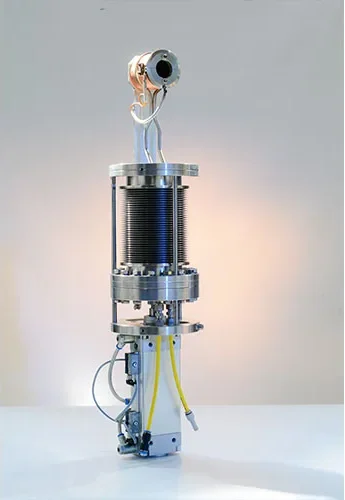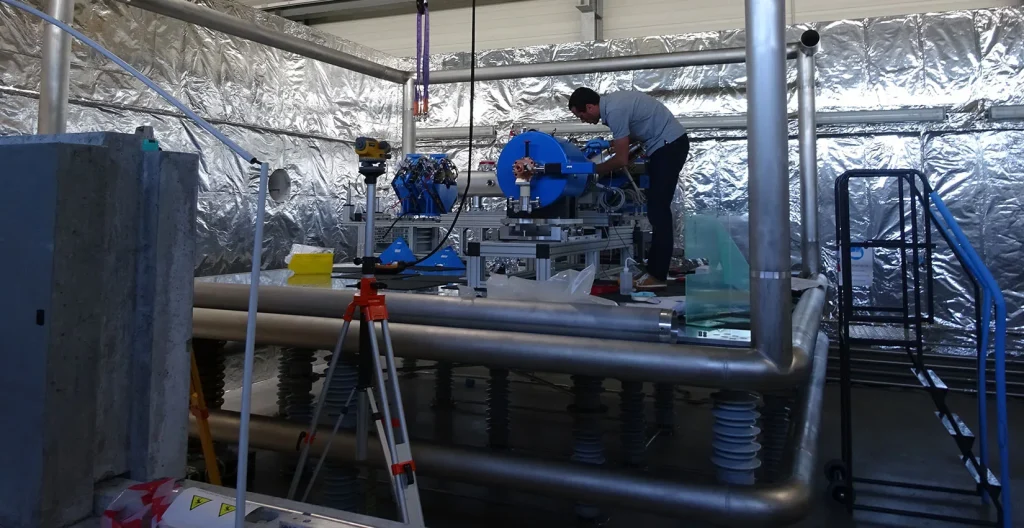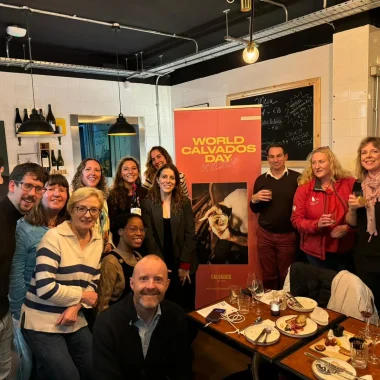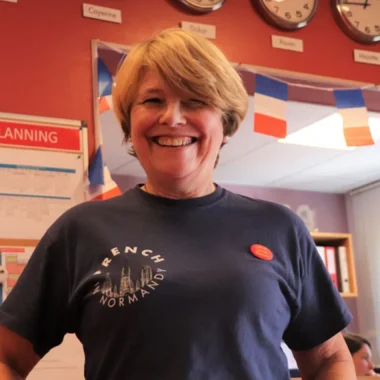Plasma, sources, ions, beams, particles… these scientific words may not feature in many people’s everyday vocabulary, but they’re very much a part of the ordinary working day for Fabrice, Sylvain, Anthony, Didier, Ludovic, Gabriel, Charles, Pierre or Sylvie… These people make up the team at this innovating company based in Bayeux, conceiving, developing, producing and installing sources of Electron Cyclotron Resonance, or ECR ions for use in the medical sector, research and industry. This Normandy company is an essential player in atomic physics, working with countries from around the world. Learn more about it here.
Back to the origins: a spin-off of Ganil

Pantechnik was created back in 1991 as an off-shoot of GANIL, the Grand Accélérateur National d’Ions Lourds (or National Large Heavy Ion Accelerator) in Caen. Its management is split between two bodies: Sominex, an associated company specialising in high technology sectors, with an 82% holding; and SAPHYN, a collective of local investors led by the Normandy Region to promote medical applications, with an 18% share. ‘The heart of our work is creating and supplying sources of ECR ions for electron cyclotron resonance. This involves creating vacuum chambers surrounded by a specific magnetic circuit that, through heating the electrons at the core of the plasma, produce beams of matter for particle accelerators,’ explains Pierre Salou, a doctor in engineering who works at Pantechnik.
ECR ion sources were first invented by Richard Geller at Grenoble’s Centre d’Etudes Nucléaires in the 1970s, ‘which made France a pioneering country in the field’. Generally presented in the form of cylinders, these sources can have different uses, according to the sectors from which the clients come.
Let’s pause there for some further information! To explain the sentences above and understand what makes Pantechnik such an innovative company, here’s a little reminder of some of your physics and chemistry lessons from the past!
Matter, that’s to say everything that makes up the objects around us that have mass and volume, consists of a multitude of invisible atoms. These atoms are in turn made up of a nucleus around which electrons circulate. Once you’ve recalled these basic facts, you can well imagine that these infinitely tiny particles require exceptionally powerful instruments to understand them – this is the principle behind particle accelerators. In short, atoms are sped up to enable scientists to study them.
As part of the process, Pantechnik conceives ‘‘sources’’ or injectors (small accelerators made to be attached to larger ones), machines that serve to create ions at the base of the accelerator, that’s to say atoms carrying an electric charge. This way, they’re ready to be sped up and studied.

Innovative applications
Having first covered these technical definitions, let’s move on to concrete applications. Accelerator technologies serve, for example, in the medical world, for hadron therapy, an innovative technique for treating cancerous tumours using particles. ‘The disease is treated by the ions, via proton therapy or carbon therapy.’ While proton therapy is being developed very gradually in France – a third machine was being installed in Caen at time of writing – carbon therapy is, for the time being, only available in a few rare spots around the world, notably in Italy and Austria, thanks to CERN, and in Germany, China and Japan, the last having committed itself very early on to this form of combating cancer. ‘These are very specific, very expensive treatments. All the carbon therapy machines around the world, except those in Japan, use our sources,’ Pierre explains.
Another, more industrial application concerns the pharmaceutics sector, where ion injectors are used to find traces of molecules. Also, sources can be used in archaeology, for carbon dating. ‘Our third destination is research. We work with many nuclear and atomic physics laboratories.’
Laboratories, industries, universities…
Down the years, Pantechnik has expanded its offer. ‘Today, we’re able to provide machines ready for use. We make the sources, plus everything else required to equip accelerators with ion beams, as well as providing the electricity provision, automation, certification, diagnostics, etc…’ The catalogue is impressive; so are the skills employed. Conceived in major laboratories, like those at CEA, CERN or GANIL, these products will then be industrialised and simplified by the Bayeux company, which is capable of adapting machines for customers in their own setting, according to their requirements. ‘The idea is to make them more robust and easier to use.’ For example, the Scottish SUERC laboratory contacted Pantechnik to develop its method for measuring carbon 14. ‘We proved the feasibility of the project and went to see NEC in the US, a world leader in this type of machine, to set up a three-way collaborative venture, so sharing profits from any sales. Now, we’re developing the prototype and we’re in the demonstration phase for future purchasers,’ Pierre explains.
High intensity or multicharged sources, measuring instruments and more feature too… ‘We also make diagnostics that we sell to GANIL and CERN, and will soon sell in Russia, providing an analytical system by which to measure the quality of the beams, that’s to say their capacity to be directed within the rest of the ion accelerator.’ The Pantechnik team also deals with installation, follow-up and training, as required. ‘For example, we go into hospitals to train operators in understanding what’s really going on during the process.’
These many strengths undeniably contribute to spreading Normandy’s scientific reputation far and wide, the region being recognised today for its standing in this cutting-edge sector. As proof, Pantechnik, a member of the Normandy Nucléopolis hub, was selected to participate in the International Particle Accelerator Conference (IPAC ’18) from 29 April to 4 May 2018, in Vancouver, Canada. IPAC is a major international event in this particular technological ecosystem, welcoming over 1,200 participants and featuring 70 stands from around the world.
Glossary :
- CERN: the Conseil Européen pour la Recherche Nucléaire, CERN also goes by the name of the European Organisation for Nuclear Research, and is further known as the European laboratory for particle physics. It is in fact the largest centre for particle physics in the world. It’s located on the Swiss-French border outside Geneva.
- GANIL: the Grand Accélérateur National d’Ions Lourds (or National Large Heavy Ion Accelerator), is a really major research facility located in Caen, serving French, European and international projects. Today, GANIL is one of the largest laboratories in the world for ion beam research.
- CEA: the Commissariat à l’Energie Atomique (or French Alternative Energies and Atomic Energy Commission) is a research organisation focused on defence and security, nuclear and renewable energies, technological research for industry and fundamental research in material and life sciences.
- SUERC: Scottish Universities Environmental Research Centre (a research institute for the combined universities of Glasgow and Edinburgh, based in Scotland)
- SOMINEX: a firm and research centre based next to Pantechnik in Bayeux. Sominex specialises in integrated systems of vacuums and ultra-vacuums for scientific sectors, designing, making and distributing equipment for use in oil prospecting and conceiving high value-added innovative products for the defence industry. It’s also a major player in research, collaborative development and the production of innovative machines for use in the medical sector, as well as being a level 1 provider in nuclear-related matters for over 20 years.
Thematics


